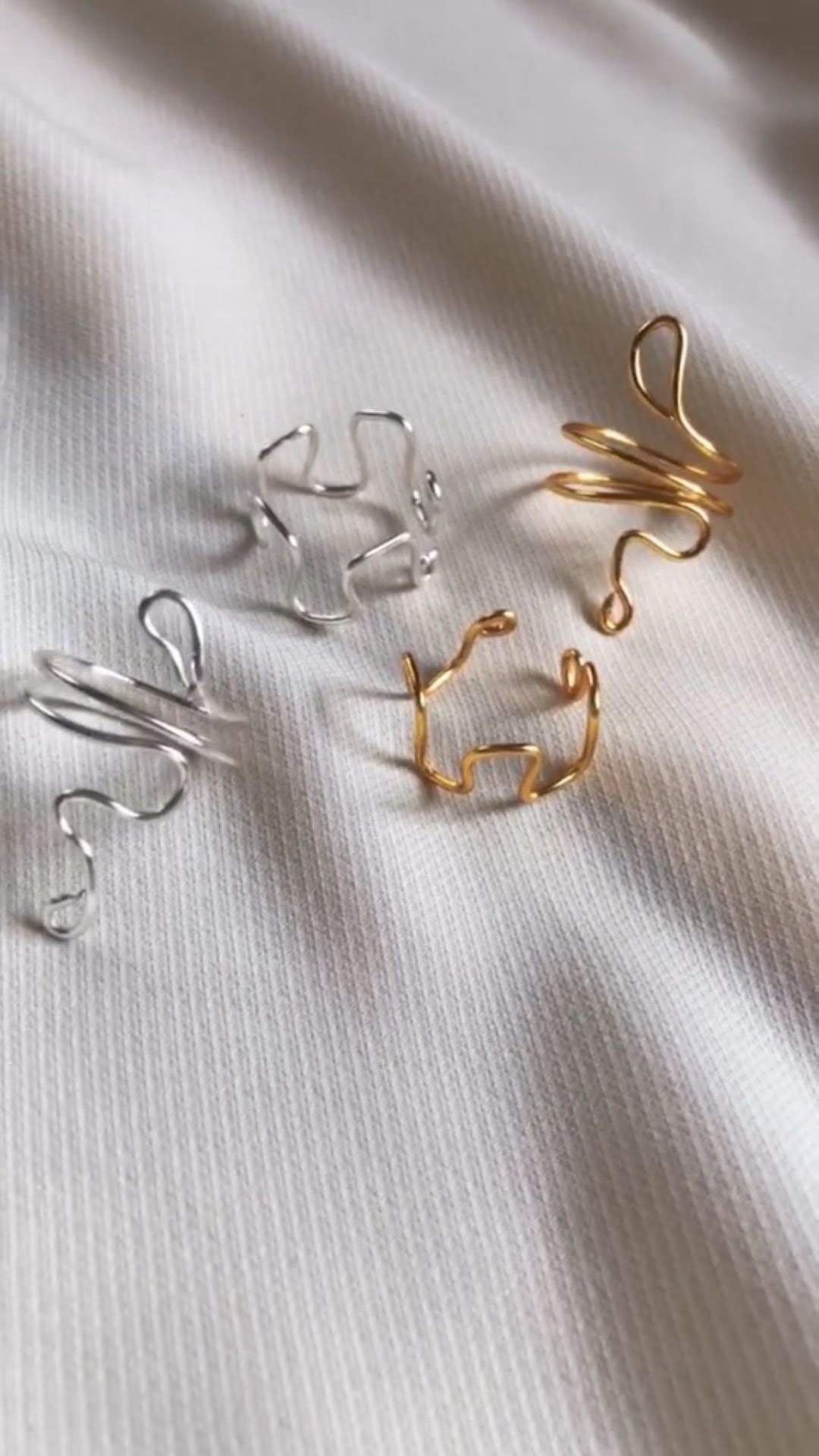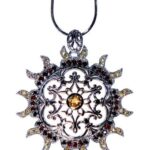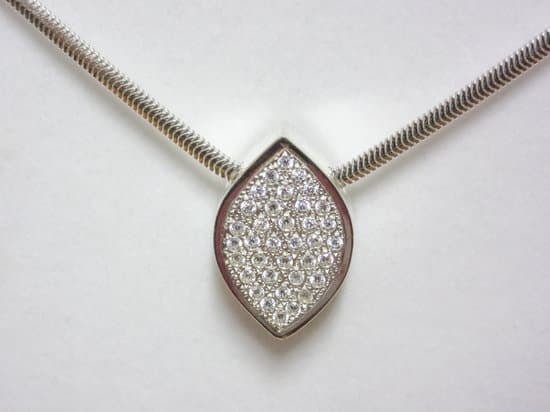The art of homemade jewelry DIY has become increasingly popular in recent years, providing a creative outlet and a sense of satisfaction for many craft enthusiasts. With endless possibilities for design and customization, making your own jewelry allows you to express your unique style while also saving money.
However, one important aspect of DIY jewelry making is choosing the right metal to work with. In this article, we will delve into the world of different metals that can be used to create stunning homemade jewelry.
When it comes to crafting homemade jewelry, understanding the fundamentals of various metals is essential. Different metals offer distinct characteristics such as durability, malleability, and affordability, all of which play a significant role in the final outcome of your creations. By exploring these characteristics and learning about individual metals, you can make informed decisions on which ones are best suited for your projects.
In our journey through the world of homemade jewelry DIY, we will not only explore precious metals like gold, silver, and platinum but also dive into the beauty and affordability of base metals like copper, brass, and stainless steel. Additionally, we will take a step beyond traditional metals by discussing alternative materials such as polymer clay, resin, wood, and beads that can add unique aesthetics to your homemade creations.
Join us as we embark on an exploration of different metals and materials for making beautiful homemade jewelry.
Understanding the Fundamentals
The Importance of Choosing the Right Metal
When it comes to making homemade jewelry, choosing the right metal is crucial. Not only does it determine the durability and longevity of the piece, but it also affects its overall aesthetic appeal. Understanding the fundamentals of different metals suitable for DIY jewelry will help you make informed decisions and create stunning pieces that reflect your personal style. In this section, we will discuss the various types of metals commonly used in DIY jewelry making and their unique characteristics.
Exploring Different Metal Options
There are several types of metals that are commonly used in homemade jewelry DIY projects. Each metal offers its own set of advantages and considerations, allowing you to find the perfect option for your specific needs. Let’s explore some popular choices:
1. Sterling Silver: Known for its timeless elegance, sterling silver is a versatile metal often used in DIY jewelry making. It is durable, affordable, and offers a brilliant shine that complements various styles.
2. Gold: The epitome of luxury, gold is a classic choice for homemade jewelry DIY enthusiasts. While 24k gold is too soft for most jewelry applications, alloys such as 18k or 14k gold offer durability while still providing a beautiful finish.
3. Copper: Copper has gained popularity in recent years due to its warm tones and affordability. It is highly malleable, making it ideal for creating intricate designs with unique textures.
4. Brass: Similar to copper, brass also boasts an alluring warmth and versatility. It can be easily manipulated into various shapes and finishes while offering a more affordable alternative to precious metals.
5. Stainless Steel: Known for its strength and resistance to tarnish, stainless steel is an excellent choice for those seeking durable pieces with a modern edge. It is affordable and offers a wide range of finishes, from polished to matte.
Considering Unique Characteristics
It is important to consider the unique characteristics of each metal when selecting the right option for your homemade jewelry DIY projects. Durability, malleability, and affordability are key factors to keep in mind. Additionally, consider the specific requirements of your intended jewelry piece, such as its function and desired aesthetic. Taking these factors into account will ensure that you choose the right metal that aligns with your vision and meets your expectations.
Exploring Precious Metals
Gold, silver, and platinum have long been admired for their beauty and value, making them popular choices for homemade jewelry DIY. These precious metals offer a timeless appeal that can elevate any piece of jewelry. In this section, we will delve into the pros and cons of each metal option and explore their affordability and availability.
Firstly, let’s take a look at gold. Known for its luxurious appearance, gold is a classic choice for jewelry making. It is highly durable and does not tarnish easily, making it suitable for everyday wear.
However, pure gold is too soft to be used in its pure form for jewelry, so it is often alloyed with other metals such as copper or silver to increase its strength. The karat system is used to measure the purity of gold, with 24 karat being pure gold and 18 karat being 75% pure. Keep in mind that higher karat golds are more expensive but also more malleable.
Silver is another versatile metal commonly used in homemade jewelry DIY projects. It has a beautiful luster and can be polished to a high shine. Sterling silver, which consists of 92.5% silver mixed with other metals like copper or zinc, is the most popular choice due to its durability. However, silver jewelry may tarnish over time due to exposure to air and moisture. Regular cleaning and proper storage can help prevent tarnishing.
Platinum is a rare and valuable metal that offers a unique white-silver color that doesn’t fade over time. It is extremely durable and resistant to tarnish or corrosion. Platinum jewelry typically contains at least 90-95% platinum alloyed with other metals like iridium or ruthenium for added stability. While platinum may be more expensive than gold or silver, it is an excellent investment due to its durability and rarity.
| Metal | Pros | Cons |
|---|---|---|
| Gold | Durable, doesn’t tarnish easily, luxurious appearance | Pure gold is too soft for jewelry, higher karat golds are more expensive |
| Silver | Beautiful luster, can be polished to a high shine, relatively affordable | Tarnishes over time, requires regular cleaning and proper storage |
| Platinum | Rare and valuable, unique white-silver color, extremely durable | More expensive than gold or silver |
When choosing between these precious metals for your homemade jewelry DIY projects, consider your budget, desired appearance, and level of maintenance you are willing to commit to. Each metal option has its own charm and can create stunning pieces of jewelry that will be cherished for years to come.
Embracing Base Metals
Base metals, such as copper, brass, and stainless steel, have been gaining popularity in the world of DIY jewelry making. These metals offer unique characteristics that make them an attractive choice for those looking to create homemade jewelry. In this section, we will delve into the distinct qualities of each base metal and explore the affordability they provide.
Copper
Copper is a versatile metal that has been used in jewelry making for centuries. It has a warm reddish-brown color which can be left untreated or altered through various patina techniques to achieve different shades and finishes. Copper is highly malleable, making it easy to work with and shape into intricate designs. It is also more affordable compared to precious metals like gold or platinum, allowing DIY enthusiasts on a budget to experiment without breaking the bank.
One of the standout features of copper is its ability to develop a natural patina over time. This patina adds character and depth to the jewelry piece, giving it an antique or rustic look. However, if desired, copper can be easily cleaned and polished to regain its original shine.
It’s worth noting that copper may cause skin discoloration in some individuals due to oxidation reactions. To prevent this, you can apply a clear coat or use protective sprays specifically made for jewelry.
Brass
Brass is another base metal commonly used in homemade jewelry DIY projects. It has a stunning golden hue that closely resembles gold but at a fraction of the cost. Brass is known for its durability and resistance to tarnish compared to other base metals. This makes it an excellent choice for pieces that will be exposed to daily wear and tear.
One advantage of brass is its versatility when it comes to creating intricate details and designs. Its malleability allows artisans to experiment with different techniques such as etching or embossing brass sheets. Brass also accepts various finishes well, including polishing, plating, or patinas. It’s important to handle brass with care as it may cause allergies or skin reactions in some individuals, especially if the jewelry comes into prolonged contact with sweat or moisture.
Stainless Steel
Stainless steel is a modern and popular choice for DIY jewelry making. It is highly durable, resistant to tarnish and corrosion, and has a sleek and contemporary appearance. Stainless steel offers a wide range of finishes, including high polish, satin, matte, and hammered textures. Its affordable price point makes it an excellent option for creating statement pieces that are both stylish and long-lasting.
One notable advantage of stainless steel is its hypoallergenic nature. It is generally safe to wear even for people with metal allergies or sensitive skin.
This makes stainless steel a suitable choice for those who want to create jewelry that can be worn by anyone without causing adverse reactions. Another benefit of working with stainless steel is its durability which allows for more intricate designs and the possibility of incorporating other materials such as gemstones or beads into the jewelry piece.
Going Beyond Metals
When it comes to crafting homemade jewelry, the options extend beyond just metals. Many DIY enthusiasts are now experimenting with incorporating non-metal materials into their creations, opening up a world of creative possibilities and unique aesthetics. Here are some alternative materials that you can consider for your homemade jewelry DIY projects:
- Polymer Clay: Polymer clay is a versatile material that can be molded into various shapes and designs. It comes in a wide range of colors and finishes, allowing you to create vibrant and detailed pieces. From earrings and pendants to bracelets and rings, polymer clay offers endless possibilities for your homemade jewelry.
- Resin: Resin is a popular choice for creating stunning statement pieces of jewelry. It allows you to encapsulate various objects, such as dried flowers, glitter, or even small trinkets, within a clear or colored resin mold. The result is a unique and personalized piece that can’t be found in stores.
- Wood: Wood has been gaining popularity in the DIY jewelry scene due to its natural warmth and rustic charm. You can use different types of wood beads or even carve intricate designs onto wooden pendants or earrings. Combining wood with metal accents can add an interesting contrast to your homemade jewelry.
- Beads: Beads are a timeless addition to any jewelry design, whether they are made from glass, ceramic, or gemstones. They come in an array of colors, sizes, and shapes, making them perfect for adding texture and visual interest to your creations.
Incorporating these non-metal materials into your homemade jewelry DIY projects is not only fun but also allows you to create truly one-of-a-kind pieces that reflect your personal style and creativity. Don’t be afraid to experiment with different combinations of metals and non-metals to achieve the desired look for your homemade jewelry creations.
Remember to source high-quality materials from reputable suppliers to ensure the durability and longevity of your handmade pieces. With the right materials and a dash of creativity, you can elevate your homemade jewelry DIY projects to a whole new level.
Factors to Consider
When it comes to making homemade jewelry, choosing the right metal is an essential part of the process. The metal you choose can greatly impact the overall look, durability, and even the cost of your creation. Here are some factors to consider when selecting the right metal for your homemade jewelry DIY.
One important factor to consider is skin sensitivity. Some metals may cause allergic reactions or irritations on certain individuals. If you have sensitive skin, it is best to choose hypoallergenic metals such as surgical stainless steel or titanium. These metals are known for their non-reactive properties and are safe to wear for those with sensitive skin.
Another factor to consider is the desired aesthetics of your jewelry piece. Different metals have unique colors, finishes, and textures that can greatly impact the overall look of your creation. For a classic and elegant look, gold and silver are excellent choices. If you prefer a more rustic or vintage vibe, copper or brass could be perfect options. Consider what kind of style or statement you want your jewelry to make and choose a metal that aligns with that vision.
Lastly, consider the intended purpose of your jewelry piece. If you are making everyday wear jewelry or pieces that will be exposed to water or harsh conditions, you may want to opt for a more durable metal like stainless steel or platinum. On the other hand, if you are creating special occasion or statement pieces that won’t be subjected to everyday wear and tear, precious metals like gold or silver could be suitable choices.
Techniques and Tools
When it comes to creating homemade jewelry, understanding the techniques and tools for working with different metals is essential. Each metal has its own unique properties and requires specific methods to achieve the desired results. In this section, we will explore the various techniques and tools needed for working with different metals in homemade jewelry DIY.
One of the most common techniques used in metalworking for jewelry making is soldering. Soldering is the process of using a high-temperature torch or soldering iron to join two pieces of metal together. It requires the use of solder, which is a low-melting alloy that acts as a bonding agent between the metals. The type of solder used depends on the specific metal being worked with. For example, silver solder is commonly used when working with sterling silver.
Another important technique in metalworking is metal texturing. This involves adding texture to the surface of the metal to create visual interest and enhance the overall design of the jewelry piece. Texturing can be achieved through various methods such as hammering, etching, or using specialized tools like texture hammers or rolling mills. The choice of technique depends on the desired texture and effect you want to achieve.
In addition to these techniques, there are several essential tools that every jewelry maker should have when working with different metals. These include:
- Jeweler’s saw: Used for cutting precise shapes and designs in metal.
- Pliers: Essential for holding, bending, and manipulating the metal during jewelry making.
- Filing tools: Used to smooth rough edges and refine shapes.
- Mandrels: Used for shaping rings or other curved forms.
- Buffing wheels/polishing cloths: Used to polish and bring shine to finished metal pieces.
By mastering these techniques and having the right tools at hand, you can easily work with different metals in your homemade jewelry DIY projects. Whether you’re creating delicate silver earrings or bold copper bracelets, understanding how each metal behaves and the specific techniques required will help you bring your creative vision to life.
| Technique | Tools |
|---|---|
| Soldering | Torch or soldering iron, solder, flux, heat-resistant surface |
| Metal Texturing | Hammer, texture hammers, rolling mill, etching tools |
| Jeweler’s Saw | Saw frame, saw blades |
| Pliers | Chain nose pliers, round nose pliers, flat nose pliers |
DIY Metal Jewelry Inspirations
In this section, we will showcase some stunning examples of homemade metal jewelry made by DIY enthusiasts. These examples aim to inspire and encourage readers to unleash their creativity and try their hand at making their own unique pieces. We will also provide step-by-step tutorials or link to resources where readers can find detailed instructions on how to create similar jewelry.
Gold Hoop Earrings
- Showcase a photo of a pair of gold hoop earrings made by a DIY enthusiast.
- Briefly describe the materials needed and the steps involved in creating these earrings.
- Link to a tutorial or resource where readers can find detailed instructions.
Silver Birthstone Necklace
- Display an image of a silver necklace with personalized birthstone pendants.
- Discuss the sentimentality and personalization that comes with creating custom birthstone jewelry.
- Provide a step-by-step tutorial on how to make this necklace at home.
Brass Stacking Rings
- Feature a photo of a set of brass stacking rings that can be worn individually or together.
- Talk about the versatility and trendiness of stacking rings.
- Offer a tutorial or link to resources where readers can learn how to make their own brass stacking rings.
Wire-Wrapped Gemstone Bracelet
- Show an image of a bracelet adorned with wire-wrapped gemstones.
- Explain the artistry behind wire wrapping and how it can elevate the beauty of gemstones.
- Provide detailed instructions on how to create this bracelet using basic wire-wrapping techniques.
Copper Statement Necklace
- Display a striking copper statement necklace created by combining various copper elements.
- Discuss the boldness and uniqueness that comes with wearing statement necklaces.
- Create an unordered list of different copper elements used (e.g., copper chain, wire, charms).
- Share a step-by-step tutorial or link to resources where readers can find instructions on making this statement necklace.
By showcasing these stunning examples of homemade metal jewelry, we hope to ignite the readers’ creativity and passion for DIY jewelry making. Each piece demonstrates the endless possibilities and beauty that can be achieved with different metals.
Whether it’s gold, silver, brass, or copper, there are countless ways to express oneself through handmade jewelry. The tutorials provided will serve as a starting point for readers who want to try their hand at creating their own unique pieces and explore the world of DIY metal jewelry.
Conclusion
In conclusion, the world of homemade jewelry DIY offers countless options for individuals to explore their creativity and create stunning pieces with different metals. The versatility of metal in DIY jewelry making cannot be understated, as it allows for endless possibilities in terms of design, durability, and affordability.
Throughout this article, we have delved into the fundamentals of choosing the right metal for homemade jewelry. We have explored both precious metals like gold, silver, and platinum, as well as base metals such as copper, brass, and stainless steel. Each metal has its own unique qualities and characteristics that can enhance the overall appeal of a piece.
Furthermore, we have also touched upon the use of non-metals in homemade jewelry DIY. Materials like polymer clay, resin, wood, and beads offer additional creative possibilities and can add unique aesthetics to one’s creations.
When it comes to choosing the right metal for your homemade jewelry DIY projects, factors such as desired aesthetics, skin sensitivity, and intended purpose should be taken into consideration. By understanding these factors and exploring different options available, individuals can embark on their very own DIY journey and create personalized pieces that reflect their style and personality.
So why not embrace the glamour of homemade jewelry DIY with metal? With an array of metals to choose from and an abundance of tutorials available online to guide you along the way, there is no limit to what you can create. Whether you prefer the timeless elegance of gold or silver or want to experiment with more unconventional materials like copper or resin – let your creativity shine through your handmade masterpieces. Start your own collection today.
Frequently Asked Questions
What metals can you make jewellery out of?
Jewellery can be made out of various metals, each with its own unique properties and characteristics. Some of the most common metals used in jewellery making include gold, silver, platinum, and titanium. Gold is an extremely popular choice due to its durability and timeless appeal.
Silver is another versatile metal widely used in jewellery due to its affordability and beautiful luster. Platinum is a highly durable precious metal that is often favored for its strength and resistance to tarnishing. Titanium, though less traditional, has gained popularity in recent years due to its lightweight nature and hypoallergenic properties.
What is the best metal to make jewelry out of?
Selecting the best metal to make jewellery largely depends on personal preference and specific requirements. However, gold is often considered one of the best metals for making high-quality jewelry due to its inherent beauty, durability, and ability to retain value over time.
Its radiant appearance and versatility allow for endless possibilities when it comes to designing exquisite pieces. Its relative scarcity also adds to its allure, as well as the fact that it can be fashioned into different karats (purity levels) such as 18k or 24k gold depending on desired attributes like color richness or hardness.
What is the best cheap metal for jewelry?
When it comes to finding affordable options for making jewellery without compromising quality or aesthetics, sterling silver is often regarded as one of the best cheap metals available. Sterling silver consists of 92.5% pure silver mixed with a small percentage of other metals such as copper for added strength and durability.
It offers a sleek finish akin to white gold or platinum at a fraction of their cost, making it an excellent choice for budget-conscious individuals seeking stylish yet inexpensive jewelry options.

Welcome to my jewelry blog! My name is Sarah and I am the owner of this blog.
I love making jewelry and sharing my creations with others.
So whether you’re someone who loves wearing jewelry yourself or simply enjoys learning about it, be sure to check out my blog for insightful posts on everything related to this exciting topic!





